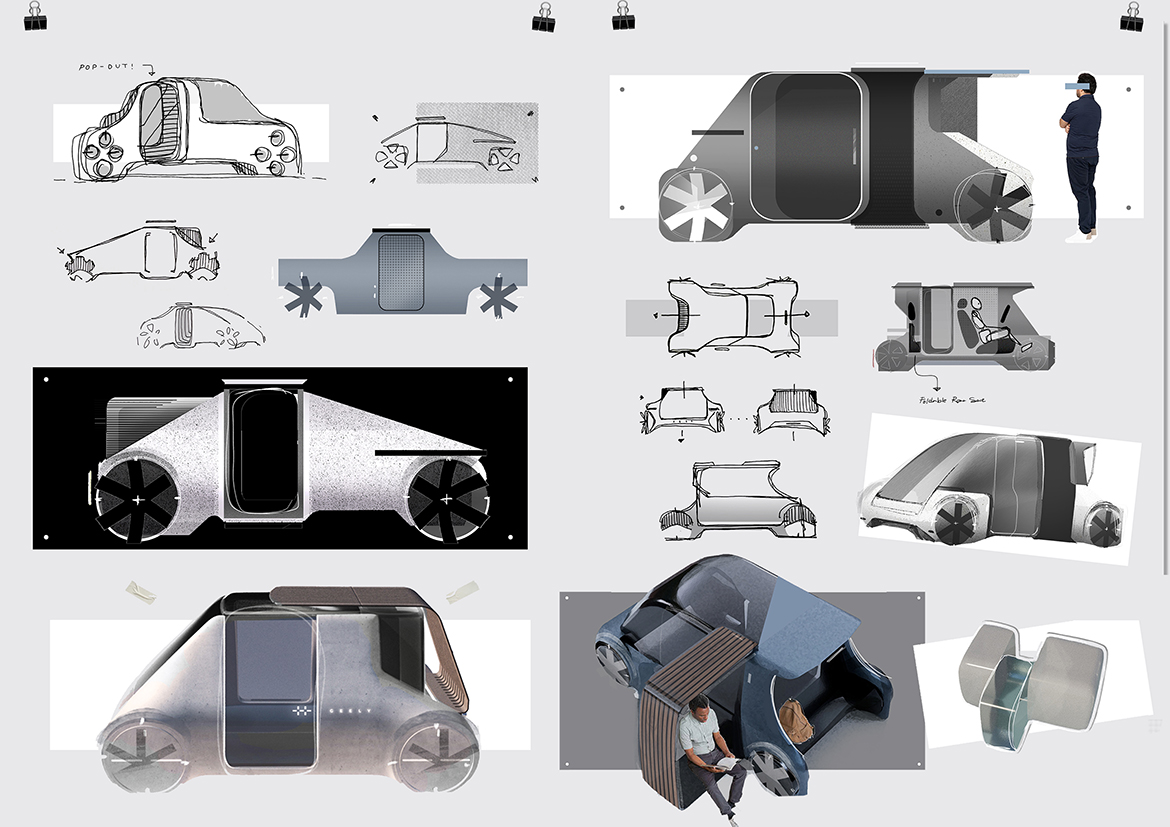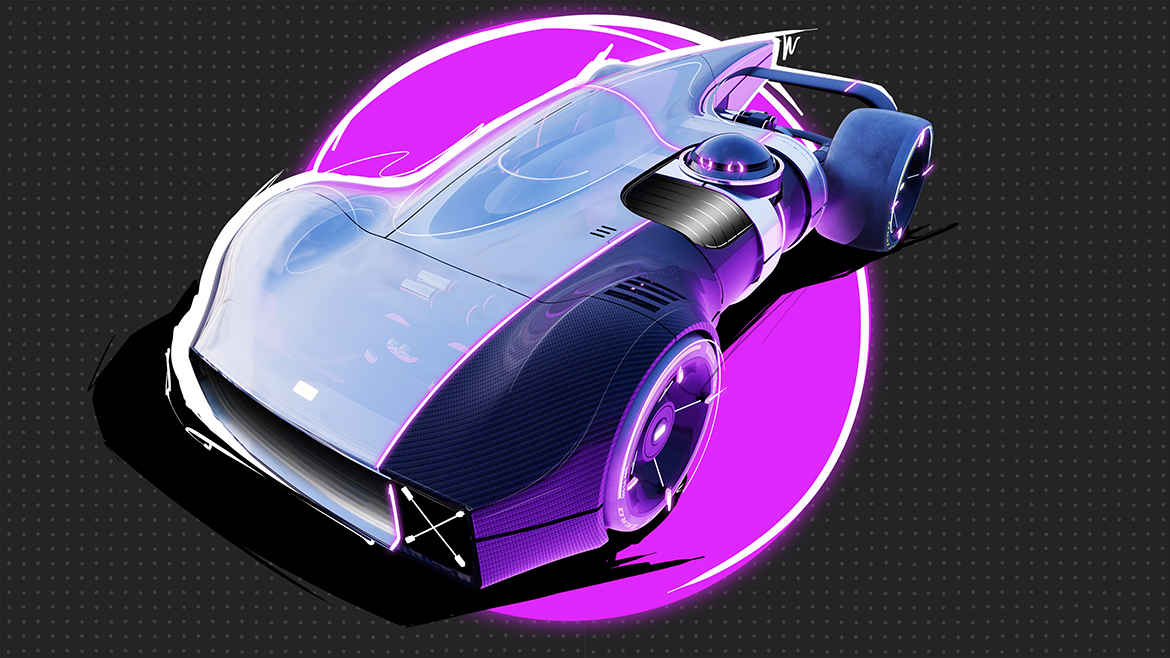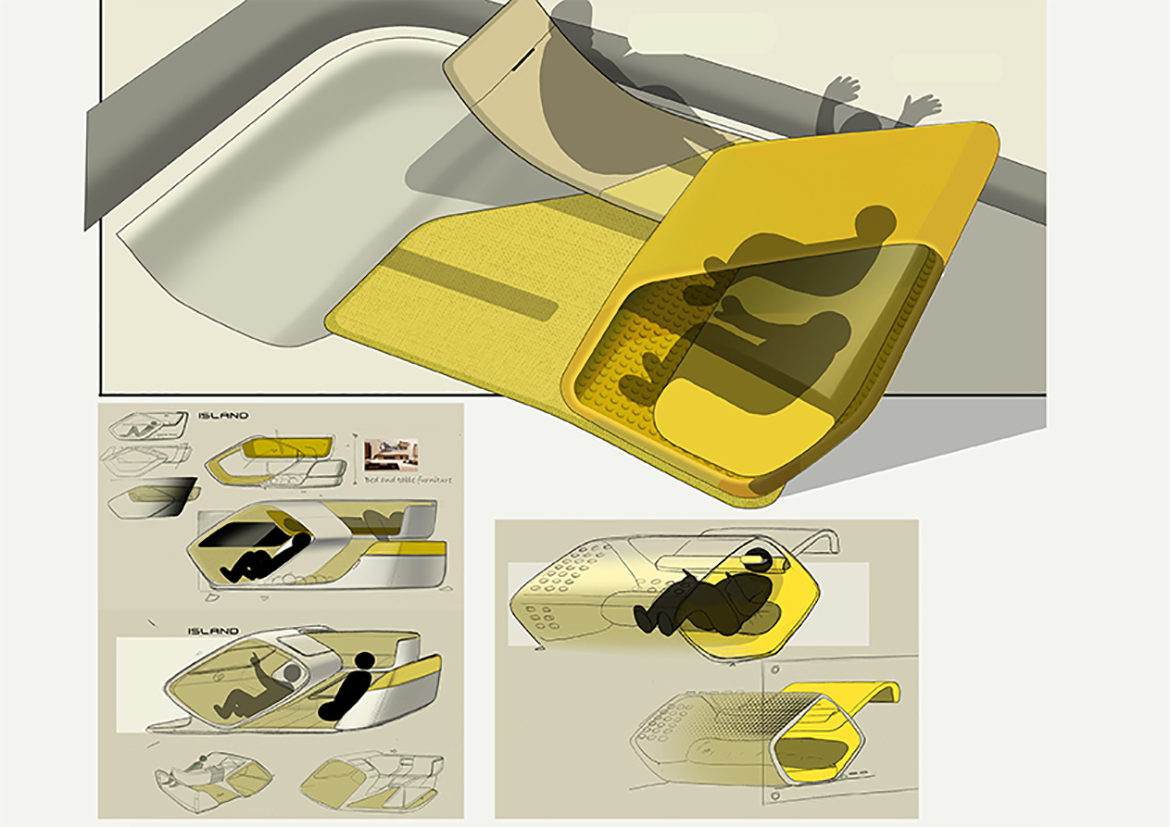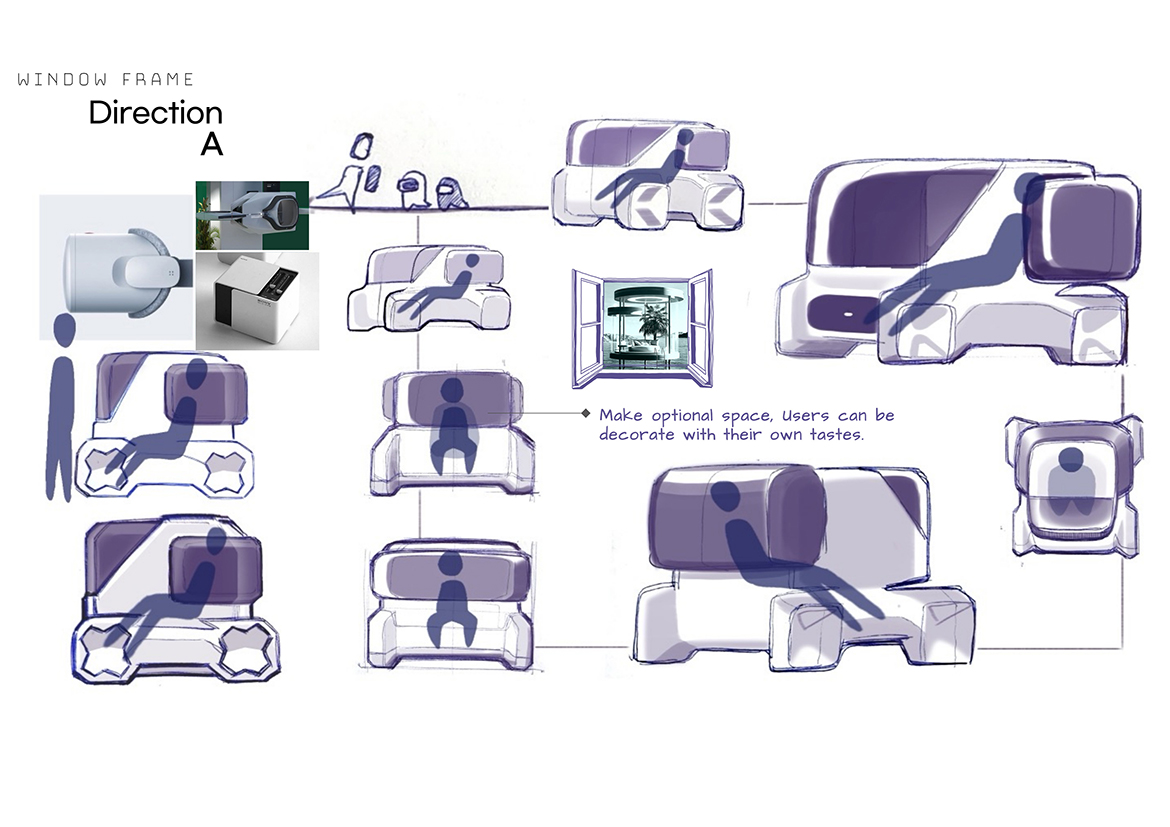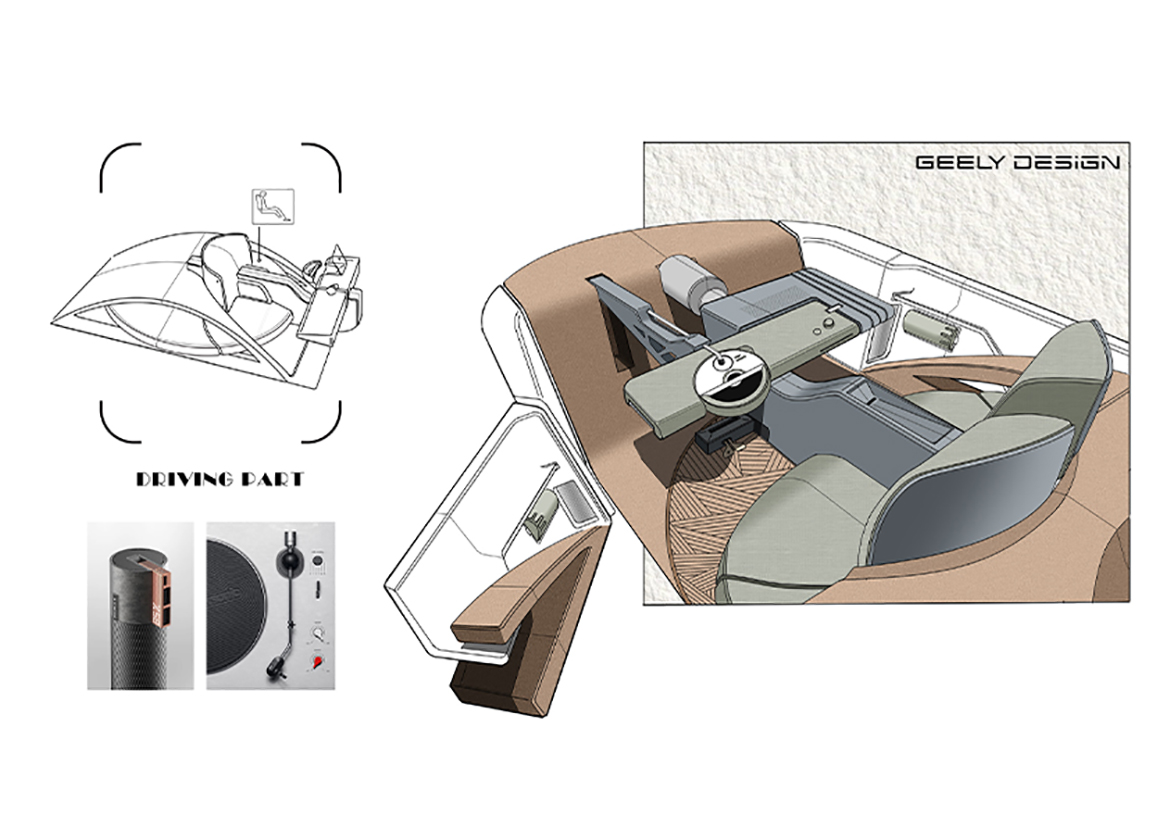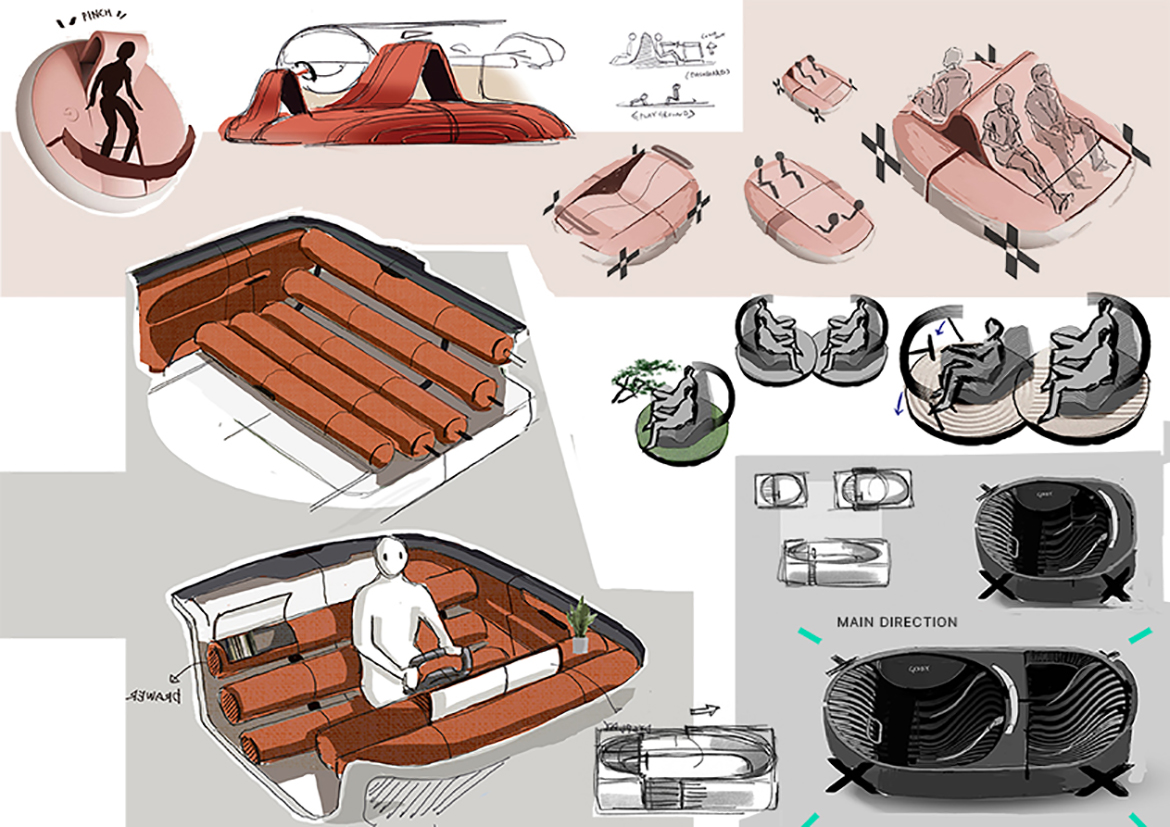Imagine the future of the Geely brand and the role artificial intelligence will play in vehicle design in 2045. This was the brief received by the students of the Master’s programme in Transportation Design at the Pforzheim University of Applied Sciences, whose Degree Show was held on 11 July. ‘The students demonstrated unique creativity and incredible vision. The passion of these new design talents inspires us too. Style is at the core of our brand’s competitiveness and cultivating innovative design talent is crucial to our long-term success. Geely has always placed great importance on collaboration between universities and industry,’ commented Chen Zheng, Vice President Geely Auto Group. The students submitted a design proposal for the exterior and interior with the simultaneous creation of a digital model.
Omni, Dayeon Youn
The name of the project is ‘OMNI’, which means ‘everywhere and for everyone’. According to a survey, cars spend an average of 95 per cent of their life time in a car park, so how to occupy it? Nowadays elements like benches or trees have lost their space in the city: why couldn’t a car become a part of the city? The dimensions of the car are 3.7 metres long, a compact vehicle that can be easily parked and used in urban areas. The main objective of this project is to utilise the time when the car is stationary and make it a comfortable resting place for everyone. The wooden rear panel can be rotated up to 90 degrees and be extended by almost 1 metre. Hooks can also be hung between the slots of the wooden panel to connect lighting, turning the Omni into a public space that can be used by the community.
Geely CoPilot, Moritz Deininger
Geely CoPilot is a racing concept designed to race in the year 2040, when our lives will become increasingly complicated and hectic. In AI mode, the robot companion will teach us the best trajectories, adjust the suspension while driving and many other things to enhance the driver’s enjoyment. In dangerous situations, it will also take control of the car or drive when you want to be driven home after a long racing session.
Islands, Hou Xinyu
Islands is an interior design for families. The initial idea was to create a vehicle for young families: the student realised that the traditional layout of spaces in cars could create many problems and conflicts between parents and children. The goal was to create an interior space that makes parents feel relaxed and allows children to have maximum fun when travelling. Children will feel like they are in a comfortable box and can play with the AI.
“多多益善”, Seoyoung Chang
Technological progress has allowed us to live more comfortably. However, it has also subjected us to various forms of pollution and, in this context, the increasing number of cars is still perceived negatively by many people. The aim of the project is to transform this negative image of vehicles, making them more familiar and accessible to people. To this end, the student applied the Chinese idiom ‘多多益善’ (the more, the merrier) as an underlying principle to increase user involvement.
Mobile Melody, Xinhao Wang
This car interior design project aims to provide young start-up bands with a creative and functional mobile workspace. The front and rear seats of the car are designed in the shape of a vinyl record, creating an eye-catching visual effect and immediately immersing the band members in a musical atmosphere. The texture of the seat surfaces mimics the grooves of a record, offering a delicate touch while providing support and comfort for prolonged use. To provide each member with independent creative space, the interior was designed to create a divider that separates the seats into two rows, while maintaining the overall shape of the vinyl.
Kotatsu, Jeong Tae Lee
The main objective of the Kotatsu project is to humanise technology by providing human warmth to objects. The key sketch of the vehicle interior shows an asymmetrical arrangement: instead of rotating the seats in a confined space, the seats are designed so that the bodies themselves can easily move to look at and talk to each other. This asymmetrical arrangement provides sufficient legroom under the central table. To give the feeling of being safe, the vehicle’s main design language is soft, simple and organic.
Lamella, Byeong In Oh
The concept of this car is based on the year 2045, a time when traffic congestion will be worse than today and is expected to become even worse in the future. This vehicle features a flexible space that can be freely transformed from a 2-seater to a 4-seater mode. To achieve this, a structure called ‘Lamella’ was used, inspired by ‘Ripple’, one of Geely Automobile’s main symbols. ‘Lamella’ refers to a structural layer composed of innumerable cells, which we have reinterpreted in the car as an interior composed of numerous layers of elements: thus the different layers of the passenger compartment can be separated or combined as required.

